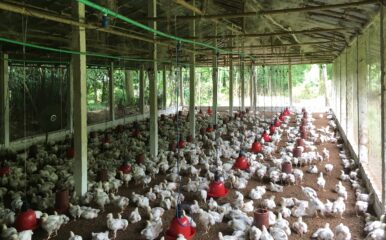
Why disease outbreaks continue to surprise
Published on 28/07/2022

Engin Akyurt/Pixabay
 This blog focuses on the ZOODLE word ‘SHOCK’.
This blog focuses on the ZOODLE word ‘SHOCK’.
There have been many ‘shocking’ disease outbreaks in the last few years. From Ebola in West Africa to Zika, COVID-19, and now Monkeypox. These diseases have one thing in common: they are all originally from non-human animals.
A shock is an emotional or physical reaction to something unexpected. We often speak of epidemics as shocking, which they can be in their scale or speed.
But for experts in the field these events are not entirely unexpected. Quite the opposite: they have been predicting or anticipating that threats from emerging diseases will become more frequent.
So what is it that makes these zoonotic outbreaks unexpected for the wider public? What is under-appreciated in dominant policy approaches which makes these outbreaks a surprise?
Let’s consider some of the components of SHOCK …
S is for sixty
Sixty percent of human diseases are zoonotic in origin, and zoonoses account for 75% of emerging infectious diseases. This means that the majority of new and existing diseases affecting people come from other animal sources. It is humbling to remember that our health is so closely tied to other animals and how frequently we swap diseases.
H is for humans
Humans are animals too! Surprise about diseases ‘spilling over’ and jumping the species barrier is often rooted in an idea that we are different and should be separated from other animals. We like to think of ourselves as above or outside of nature and culturally we put ourselves in a different category to other animals. We have built physical and social worlds which extract and depend on nature, but which view themselves as distinct from it. In this respect we are setting ourselves up for a rude awakening.
O is for One Health
One Health – the idea that the health of humans, other animals and the environment are interdependent – is not as mainstream as it should be. Part of the rationale for One Health was to overcome professional and disciplinary silos but too often these remain, and are troubled by power dynamics. We still routinely fail to see, or to act on, the ways in which our social, economic, and food production systems are connected to and breaking down ecosystems, facilitating the emergence and spread of zoonotic disease. We should not be surprised when we take this broader view into account.
C is for counter measures
Counter measures, i.e. drugs, diagnostics and vaccines, are necessary but not sufficient. Counter measures are the mainstay of global health security and preparedness initiatives, and receive a considerable amount (the majority?) of funding. As the vaccines for COVID-19 show these are certainly important but they will never be enough. There is a risk that resources and attention go to such ‘silver bullet’ initiatives – which are not equally available – while overlooking the deeper socio-economic and environmental drivers of disease and continued vulnerability.
K is for knowledge
Knowledge gaps and the politics of knowledge. This one may seem obvious, of course knowledge gaps lead to surprise. But this is not simply about the neutral absence of knowledge, it is about what gets attention and what gets overlooked. Many diseases, take Monkeypox and Lassa fever, two recent diseases which have made headlines when they were imported in to the UK, are endemic in parts of Africa but they only raise alarm when they reach populations in the Global North. When we ignore the routine spillovers and the disease they cause we miss out on the knowledge of frontline health workers, farmers and local communities who have experience with them, and we miss opportunities to understand and address the root causes of zoonotic transmission. If we listened to these voices and these signals more keenly we may not be taken as much by surprise.


